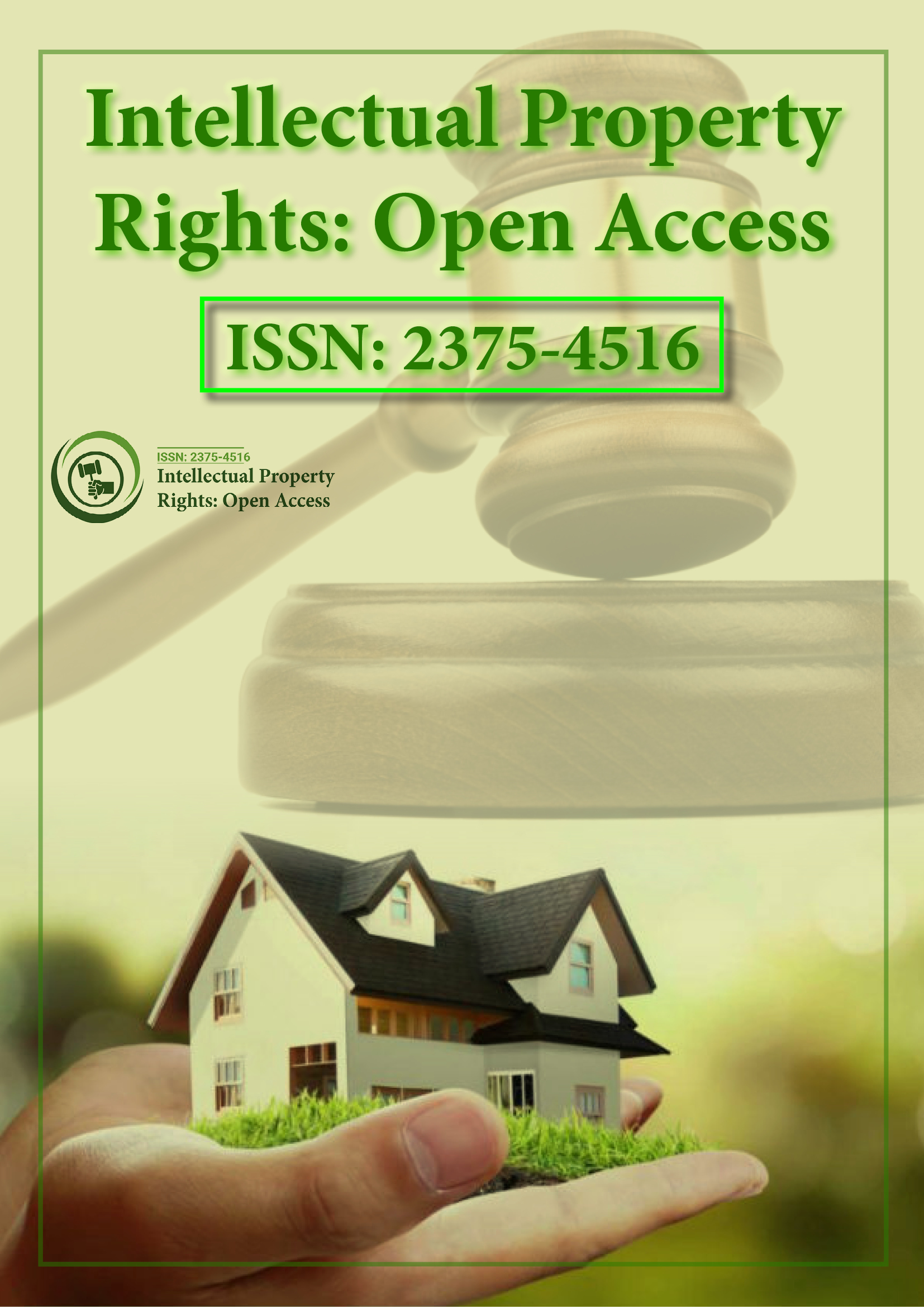Indexed In
- Open J Gate
- RefSeek
- Hamdard University
- EBSCO A-Z
- OCLC- WorldCat
- SWB online catalog
- Publons
Useful Links
Share This Page
Journal Flyer

Open Access Journals
- Agri and Aquaculture
- Biochemistry
- Bioinformatics & Systems Biology
- Business & Management
- Chemistry
- Clinical Sciences
- Engineering
- Food & Nutrition
- General Science
- Genetics & Molecular Biology
- Immunology & Microbiology
- Medical Sciences
- Neuroscience & Psychology
- Nursing & Health Care
- Pharmaceutical Sciences
Commentary - (2022) Volume 10, Issue 2
Understanding the Importance of Copyright Laws and Policies
Ying Hang*Received: 25-Feb-2022, Manuscript No. IPR-2022-16064; Editor assigned: 01-Mar-2022, Pre QC No. IPR-2022-16064(PQ); Reviewed: 15-Mar-2022, QC No. IPR-2022-16064; Revised: 22-Mar-2022, Manuscript No. IPR-2022-16064(R); Published: 29-Mar-2022, DOI: 10.35248/2375-4516.22.10.201
Description
A copyright is a type of intellectual property that offers its owner the exceptional right to copy and distribute innovative work, typically for a limited time. The innovative work can be in a literary, artistic, educational, or musical form. Copyright is supposed to protect the original expression of an idea in the form of innovative work, however not the idea itself. Copyright is subject to limitations based on public interest considerations, along with the fair use doctrine in the United States. Some jurisdictions require “fixing” copyrighted works in a tangible form. It is frequently shared among multiple authors, each of whom holds a set of rights to apply or license the work and is usually called rights holders. These rights often include reproduction, control over derivative works, distribution, public performance, and moral rights including attribution.
Copyrights can be granted through public law and are considered “territorial rights”. This way copyrights granted through the law of a certain state, do not extend beyond the territory of that particular jurisdiction. Copyrights of this kind vary by country; many countries, and sometimes a huge group of nations, have made agreements with different nations on procedures applicable when works “cross” national borders or national rights are inconsistent. Typically, the public law duration of a copyright expires 50 to 100 years after the creator dies, relying on the jurisdiction. Some nations require certain copyright formalities to establish copyright; others recognize copyright in any completed work, without formal registration. When the copyright of a work expires, it enters the general public domain. The idea of copyright developed after the printing press came into use in Europe in the fifteenth and sixteenth centuries. The printing press made it much less expensive to provide works, but as there has been initially no copyright law; anyone could buy or rent a press and print any text. Popular new works have been immediately re-set and re-published through competitors, so printers needed a steady stream of new material. Fees paid to authors for new works have been high, and notably supplemented the earnings of many academics.
Copyright legal guidelines permit products of innovative human activities, along with literary and artistic production, to be preferentially exploited and therefore incentivized. Different cultural attitudes, social organizations, economic models, and legal frameworks are seen to account for why copyright emerged in Europe and not, for example, in Asia. In the Middle Ages in Europe, there has been usually a loss of any concept of literary property due to the general relations of production, the particular organization of the literary output, and the role of the culture in society. The greatest factor is that patent and copyright laws help the expansion of the range of innovative human activities that can be modified. This parallels the methods in which capitalism led to the commodification of many aspects of social life.
When someone creates a product that is viewed as original and that required significant mental activity to create, this product becomes an intellectual property that must be protected from unauthorized duplication. Examples of unique creations include computer software, art, poetry, graphic designs, musical lyrics and compositions, novels, film, original architectural designs, website content, etc. One safeguard that can be used to legally protect an original creation is copyright. Under copyright law, a work is considered original if the author created it from independent thinking void of duplication. This type of work is known as an Original Work of Authorship (OWA). Anyone with an original work of authorship automatically has the copyright to that work, preventing anyone else from using or replicating it. The copyright can be registered voluntarily by the original owner if they would like to get an upper hand in the legal system in the event that the need arises.
Copyright protection varies from country to country, and can stand for fifty to hundred years after the individual’s death, depending on the country. While copyright law is not all-encompassing, other laws, such as patent and trademark laws, may impose additional sanctions. Although copyrights, trademarks, and patents are frequently used interchangeably, they offer different forms of protection for intellectual property.
Citation: Hang Y (2022) Understanding the Importance of Copyright Laws and Policies. Intel Prop Rights. 10:201.
Copyright: © 2022 Hang Y. This is an open-access article distributed under the terms of the Creative Commons Attribution License, which permits unrestricted use, distribution, and reproduction in any medium provided the original author and source are credited.
